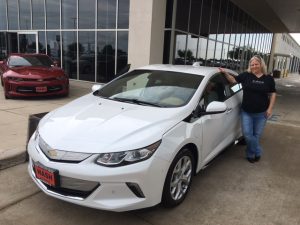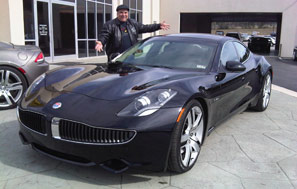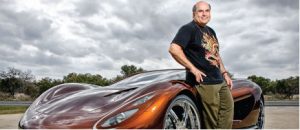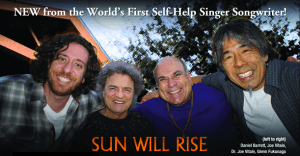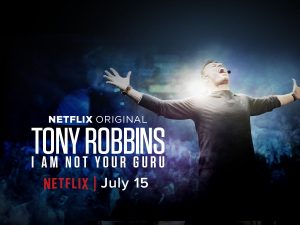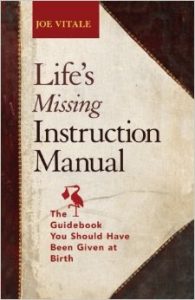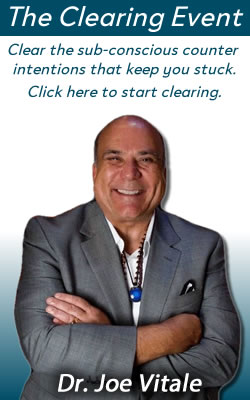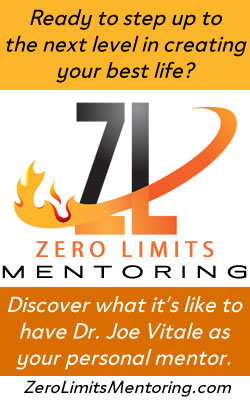Tag: attractor factor
Attracting Electric Cars
My wife, Nerissa, drives the Chevy Volt and loves it. She’s had it since 2012. Her electric car never fails, always looks great, contains what feels like enormous room inside, and rides smooth on our errands and trips. It’s a great car.
It’s so great that we just went and traded it in for a brand new 2017 Chevy Volt.
But not all electric cars are so cool or so reliable.
I owned the Fisker Karma a few years ago.
It was the opposite.
It was a nightmare to drive, though it was stunningly beautiful.
There were over a dozen things wrong with it, and the company.
Eventually the company went bankrupt, and I sold the car at a big loss.
Of course, Tesla is all over the news.
I called them when they announced their limited edition of 100 Roadsters around 2008.
But Tesla talked me out of buying one, saying they didn’t have service stations in Texas and wouldn’t be able to repair my car without transporting it to California or sending a technician to me.
Good thing I passed on that roadster, as even Elon Musk today admits that his first car was a disaster.
In a June 2016 Road and Track article online, Musk was reported as saying they had “no idea what we are doing,” and characterizing their original efforts as “completely clueless.”
Tesla is still getting lots of the media attention and I’m glad to see it.
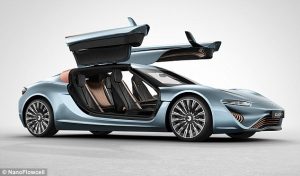
This German marvel runs on salt water, gets 960 hp and 373 miles to the tank, but will it ever be made?
Tesla’s new cars look hi-tech, dependable, and safe.
But I live in Texas, where I have seen the car on the road but have never test driven one. (I asked for a test drive and so far, over three weeks later, no one has replied.)
Besides, I’m not all that keen to get into another electric car, given my trauma with the Fisker.
And the most recent news was of a man killed while using the auto driving feature on his Tesla.
Apparently, the long range electric sports car is not yet out of the woods.
But all of this got me wondering about the origin of the electric car.
In an episode of Jay Leno’s great new TV show, Leno’s Garage, he drove an electric car from the early 1900’s that could get 90 miles on a charge.
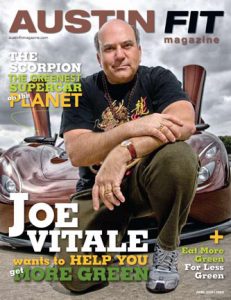
I promoted and invested in the Ronn Motors Scorpion, a stunning hydrogen sports car, only to see the company go bankrupt
What happened to it?
What happened to all the other early electric cars?
So I did some research.
Turns out in the late 1800s and early 1900s, the most popular car was the electric.
There were steam driven cars, which no one liked, and a few gas driven cars, which no one knew how to drive or fix.
But people were ready for something new, as the feces and urine filled streets where horse drawn carriages turned the roads into a sewer of slosh, was just too much and too unsanitary.
The electric was clean, dependable, and smart.
Or course, there were few cleared roads then.
And no driving schools.
And no battery chargers.
And few people had electricity.
And even fewer could actually afford the much more expensive electric car.
And a single battery cost more to replace than the Model T would cost to own.
For example, the price of a Detroit Electric car in 1914 was about $2,650. If you wanted to upgrade to the Edison Nickel Iron batteries, then the price went up about $600. At the same time, you could buy TWO NEW Model T’s for that same $600. (!)
It was an uphill battle for the electric car.
Of course, many tried to make it work.
Some entrepreneurial companies saw a business in an electric car taxi service.
The problem was, the cars could only drive about 10 miles before needing a charge or a battery replacement.
This was an incredible nuisance for the passenger — you could only go 5-10 miles away (!) – as well as for the driver and not to mention the cab company.
As a result, electric cars were made, but they weren’t sold easily: first because they were too expensive to buy, and second, they were too expensive to keep replacing batteries.
Most of the electric car companies went bankrupt.
And then Henry Ford enters.
Ford actually wanted to invest in the electric car, and make them.
He bought an electric car every other year for years. He and his wife loved them.
But the electric car companies created a coalition to block any competitors they didn’t like.
In short, many electric car companies got greedy and tried to create a monopoly.
Ultimately, they drove themselves off the pages of history.
The electric car simply wasn’t convenient or affordable at the time, and many electric companies were ruthless and competitive.
But that’s not all that happened to make the electric car lose power.
Thomas Edison inspires Henry Ford
It was actually Thomas Edison who threw the switch on making the gas powered car the vehicle of choice.
Edison, the king of all things electric, met Henry Ford at a now historic dinner in 1896.
The inventor listened to the car creator describe his idea of an ideal car: affordable, dependable, efficient, and requiring almost no maintenance.
In fact, Ford wanted his car to be low priced and maintenance free.
Edison heard all of this and slammed the table with his fist.
He then said these now historic words to Ford –
“Young man, that’s the thing; you have it. Keep at it. Electric cars must keep near to power stations. The storage battery is too heavy. Steam cars won’t do, either, for they require a boiler and fire. Your car is self-contained—carries its own power plant—no fire, no boiler, no smoke and no steam. You have the thing. Keep at it.”
Ford listened.
As a result, Ford moved the world with his new car, which was a public hit.
The electric car drifted out of awareness, except for a few failed attempts over the decades at resurrection, and the fossil fuel driven car won the race.
By 1919, virtually all electric car production was stopped, and the electric began to fade away.
It wouldn’t be until the 1970s, when gasoline prices hit record highs, that the mass public started to look for an electric car again.
I’m joining in that search.
A decade ago, when I met the people who make Panoz race cars (I have two of their street legal beauties), I told them if they make an environmentally friendly sports car, I’d buy it.
They haven’t yet.
When I heard of Ronn Motors inventing a hydrogen driven sports car, I ordered the first one, bought stock in the company, invested in the company, promoted the car on national television and on the front page of local magazines.
The company went bankrupt.
When I heard of a sports car that could run on sea water, I contacted the German company and asked if I could invest in it and order a car.
No one answered.
When Porsche made a one-of-a-kind 918 Spyder electric hybrid sports marvel, I asked the price.
They said $845,000. I passed (and almost passed out).
When BMW (a car maker I’ve always loved), developed the electric hybrid sports car they called the i8, I ordered one.
But after half a year of waiting, the salesman said it would be three more years before I would get my car.
I cancelled my order.
I could go on.
Today the marketplace is ready for an electric (or solar or sea water or any environmentally safe) car that is affordable, dependable, convenient, and attractive.
Tesla is working in that direction.
I’ll keep watching them, and other auto makers like Audi, Acura, and Nissan, to see who wins the next race. I may be a specialist in how to attract a new car, but the car also has to exist. 🙂
Meanwhile, we now have Nerissa’s 2017 Chevy Volt.
Let’s charge up and go!
Ao Akua,
PS – Some of my resources for this post include —
https://www.amazon.com/History-Electric-Cars-Nigel-Burton/dp/1847974619/
http://www.autoblog.com/2010/05/24/milburn-unveiled-1-000-ev-with-100-mile-range-swappable-batter/
http://www.lowtechmagazine.com/overview-of-early-electric-cars.html
http://aetherforce.com/electric-car-powered-by-salt-water-920-hp-373-milestank/
http://www.autobytel.com/hybrid-cars/car-buying-guides/best-electric-sports-cars-128503/
Non-Guru Tony Robbins
Three times.
That’s how many times I’ve watched the Netflix documentary, Tony Robbins: I Am Not Your Guru, which was released on July 15, only days ago.
I’m in the movie The Secret and I haven’t watched that film three times in ten years.
So why am I so captivated with this film about Tony?
It’s raw but real.
Hard-hitting but healing.
Profane but profound.
I found myself crying throughout it.
I found myself having internal breakthroughs just watching it.
I found myself relating to Tony’s inspired approach to change.
The film captures Tony’s closed-door week-long event called Date with Destiny.
In some ways the event reminded me of the old Werner Erhard est program, and to today’s Landmark Forum.
This film puts you in Tony’s secret space, much like Luke Rhinehart’s The Book of est puts you in an est event.
In both cases, you can safely observe the sometimes rollicking emotions people experience.
And in both cases, you can experience transformation just by going for the ride.
All you have to do is pay attention and feel.
Oh, there are holes in the movie.
Tony says change happens in a moment.
Yet later in the film, when he’s asked how he changed, he says there was no one moment.
Tony comes across as the trigger for change and not any method or principle.
Yet if Tony is needed for change, then methods don’t exist; there is no method. It’s him.
But I’m not a critic of the film; I’m a fan.
That’s why I’ve seen it three times – so far.
I let any holes or inconsistencies slide by as I focus on the good in the movie, the breakthroughs, the insights, the energy, the sharing – all of which act as a catalyst to awaken viewers who aren’t even physically in the seminar room with the giant king gorilla.
This makes the film itself a tool for transformation.
Documentary filmmaker Michael Moore told Joe Berlinger (the director of this film on Tony), “I believe it will actually save lives.”
I believe it, too.
A few more reasons why I love the film –
Tony goes past the little problems people offer and goes deeper, to the operating system under what they present.
When a 19 year old says her problem is her diet, Tony digs deeper to discover her issue is with her father, not her diet.
The movie helps prove why we all need coaching; without a trained person’s objective feedback, we will continue to blame our problems on others or on little things and entirely miss the big hidden operating system below our conscious awareness.
And I love statements such as, “You know what your biggest problem is? Thinking you shouldn’t have any.”
Tony goes on to explain that problems are gifts.
I don’t know Tony personally — we spoke at the same event in Chicago years ago, but hours apart, so we have yet to meet* — and I get nothing for endorsing this film from him or the director or anyone else.
But I urge you to watch it and let it stir your soul.
See https://www.netflix.com/title/80102204
Expect Miracles.
Ao Akua,
PS – My own television show, all fourteen episodes, is edited and in the hands of Amazon. Stay tuned for details. Meanwhile, go watch the film about Tony Robbins: I Am Not Your Guru. It’s stirring, soulful and spellbinding.
* You can read about the event where I spoke on the same stage as Tony, Trump, and others at http://blog.mrfire.com/a-tony-robbins-first/
Extreme Ownership
The other day I went to a local Sprint phone store to get a newer modem.
As it turned out, a miracle happened.
Since I’ve been a Sprint customer for more than ten years, I have a collection of modems that are now prehistoric. I once took a few of them to the store and the clerks took pictures of them. They had never seen the old models. They were like dinosaurs to them.
So I picked up a new and improved whiz-bang latest greatest modem and drove off.
At home, I realized that the modem didn’t have a power cord.
Apparently I had left it at the store.
Dismayed, I called the store and asked for the clerk who waited on me.
“This is Angie,” she said, brightly.
“Angie, I think I left –”
“You left the power cord here!” she interrupted, remembering me. “I forgot to put it in the box.”
I started to complain about how this would require me leaving my home again and making another drive back to the city. I wasn’t looking forward to it, as the store isn’t right around the corner. I live in the Hill Country, not the city. Plus I keep a busy schedule.
But before I could say much of anything, Angie interrupted me.
“I’ll bring it to you,” she said.
I was stunned.
I was speechless.
I was quiet for a moment while I replayed what I heard in my mind, not believing it.
“You’ll bring it to me?” I asked. “I don’t live near you, you know.”
“It’s okay,” she said. “It’s my fault and I’d be glad to drive it to you right after I get off work today.”
She did, too.
She was all smiles as she handed me the cord at my house.
“Do you live out here someplace?” I asked.
“No, but don’t think anything of it,” she said. “It was my choice.”
Angie’s astonishing customer service and upbeat attitude got me thinking about a book one of my nephews told me about.
Extreme Ownership is a New York Times bestseller by Jocko Willink and Leif Babin.
It explains the leadership skills of the U.S. Navy Seals. It’s a well written book, with stories from the military as well as business, with principles they teach to get stellar results.
What interested me was the idea of full – or extreme – responsibility.
In my books, Zero Limits and AT Zero, I talk about total responsibility as a principle of ho’oponopono.
But Extreme Ownership strips away the spirituality and explains “extreme responsibility” as a practical tool in business and life.
I have no idea if Angie read Extreme Ownership, but her instant willingness to satisfy her customer reflected an attitude of total responsibility.
She didn’t pass the buck.
She didn’t tell me to drive back in.
She didn’t complain or blame or refrain.
She took responsibility.
She took extreme ownership.
And she has a friend, a fan, and a fanatic customer for life.
How does this apply to you?
Whenever you are about to complain that someone didn’t do something you asked for, turn it around and claim “extreme ownership” for the problem.
Look in the mirror and accept responsibility for your own lack of communicating how important the job was.
Look to yourself for your lack of leadership skills.
And then do something to correct it.
The other night I watched a brief biography of President John F. Kennedy.
When the Bay of Pigs was a disaster in 1961, and soldiers lost their lives, Kennedy went on national television and accepted total responsibility for the tragedy.
You may not be president, but you ask people to do things and they often don’t do them.
Are you going to blame them or find a way to resolve the issue?
Extreme ownership – whether taught by the U.S. Navy Seals or the practiciners of ho’oponopono – is about taking full responsibility and fixing the problem from within you.
Of course, at a certain point, you may decide to remove the people who aren’t doing what they promise, no matter how many times you explain it or in so many different ways.
That’s when you need to pull a Donald Trump and say, “You’re fired!”
But that decision only comes after exhausting your alternatives and taking extreme responsibility for the results – or lack of them.
As my new motto states, “It is what you accept.”
What are you accepting?
Ao Akua,
PS – Have you read my new book?
Answers for Preeya
Preeya, editor of Journals of the World, sent me a list of interesting questions. You can find them below, with my answers, or at her site. Enjoy!
– Knowing that every person has their own reality and that our thoughts
can shape our reality. When did this realisation come to you and how did
you manage to apply it your everyday life?
I first heard of the idea as a child in the 1960s, from reading books by Robert Collier. But I didn’t even begin to grasp the concept until I read the Seth books, by Jane Roberts, while broke and struggling as a young adult in the 1980s. And even then I didn’t fully integrate the ideas into my day to day life until decades later. Today I still need to remind myself that what I see is based on my perceptions, on my version of reality, and that everyone has their own version of reality. Reminding myself of this key concept makes life easier.
– What exactly inspires you?
I never know. Each day is different. Generally, books and ideas inspire me. But so do some people. I became a writer because of the authors who inspired me, like Jack London and Shirley Jackson. I became a musician because of singer-songwriters who inspired me, such as Neil Diamond and Rob Thomas. I became a strongman, doing feats of strength, after being inspired by people like Dennis Rogers and Iron Tamer David Whitley. I simply allow my passions to inspire me and follow them where they lead.
– Being involved in ‘The Secret’ documentary, a worldwide hit based on
the law of attraction, how did you get involved in it and what did it
mean to you to be part of such a production?
Rhonda Byrne, the producer of the movie, called me after reading my book, The Attractor Factor. She said she was making a movie and wanted me in it. I was flattered and agreed. I had no idea what I was getting into. The movie changed my life forever. I had a degree of fame as a marketer and copywriter before it, but being in the movie established me as a self-help teacher to the globe. It’s led to numerous opportunities and travels. I am forever grateful.
– The whole concept of the law of attraction is a difficult one to get
your head around for someone who is new to the topic. What message or
advice would you give to these people reading?
I’d say don’t worry about it. Over thinking the law of attraction is like over thinking the law of gravity. You simply need to know how to work with the laws. In the case of LOA, you have to remember that your unconscious beliefs are creating your reality. Learn ways to change your hidden operating beliefs and you’ll have a more fantastic life.
– You have spoken about being homeless and in poverty for many years,
and have now published a great book called ‘Attract Money Now’. But what
does money do for you?
Money does the same thing for me as it does for you: it enables you to live your dreams. I’ve written a new book, The Awakened Millionaire, which is a manifesto for people to live their life mission and to realize that money helps them fulfill their life mission. Money is simply a tool to fulfill dreams. Nothing more.
– When being introduced to the law of attraction, many of us only
believe it to be true once it has worked for us. Knowing its power, what
is the next goal you would like to achieve?
I have numerous goals. Creating a society of Awakened Millionaires is one. Ending homelessness is another. Writing new books that inspire and transform the planet is another.
Ao Akua,
Imaginotions: Part Five
The young woman awakened early, stirred by the flutter of a bird.
She went to her window and saw a bluejay sitting there.
“Good morning,” she said.
The bluejay seemed to wink.
She went to her mirror.
To her confusion, she saw nothing there.
She gasped.
“Why-Why…” she stammered, not sure what to say at her empty mirror.
“Have no fear,” a voice said from outside the window.
She spun around and looked at the window.
The bird was still there.
“Have no fear,” the bird repeated.
This was almost too much for the young woman.
No reflection in her mirror?
A bird that talks?
“Have no fear,” again said the bluejay.
“But I-I don’t understand!”
“Have no fear.”
“But I can’t see myself!” she exclaimed, getting panicky. “And you’re TALKING!”
“The nothingness you see in the mirror is the mirror of the real you,” said the bird.
“I am nothing?!”
“You are everything.”
“But I see nothing in the mirror!”
“Look again,” suggested the bird.
The young woman took a breath, calmed down a bit, and looked into her mirror.
Suddenly she realized all she saw in it was all she felt in her.
The mirror was her.
The mirror reflected all within and appeared without.
She slowly smiled.
“I think I understand,” she said, half to herself.
The bird smiled.
“But what about this business of a bluejay speaking?” she asked.
“Ah, but within the dream, all is possible.”
“All?”
“Whatever you can imagine, and can believe, can be achieved.”
“You sound like Napoleon Hill,” the woman said, smiling.
“I can read, too,” said the bird.
“All things really are possible,” mused the woman.
“And now you may awaken,” said the bird.
Thus the bluejay ended the lesson for the day.
Ao Akua,
PS – You know what this means.

